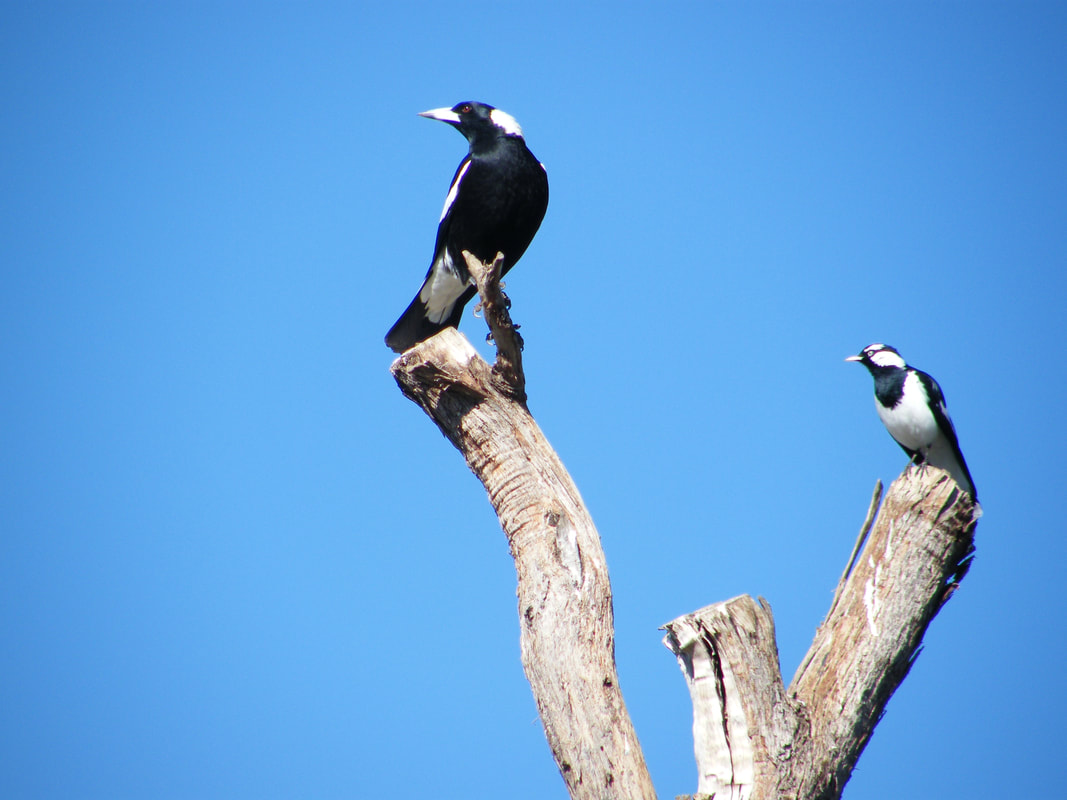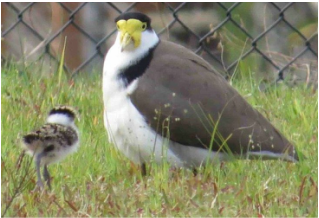|
SWOOPING BIRDS |
Most native birds are protected under the Wildlife Act 1975 and there are serious penalties for taking, harassing or injuring native wildlife. It is illegal to kill birds, or to interfere with their nests containing eggs or young without a permit or authority. See below for tips on how to protect yourself against swooping birds. If you have a particularly aggressive bird that you are concerned about, contact your local council.
|
Australian Magpie
Australian Magpies are impressive birds with their distinctive black and white plumage and melodic warbling. From August to October, breeding magpies build nests high up in the trees, made of sticks lined with anything from grass to bits of plastic and wire. The eggs hatch after about 20 days, and the young spend 4 weeks in the nest before they fledge. Magpies are very protective of their young and may swoop on intruders if they feel threatened. To learn more about Magpies, their history and behaviour including why they swoop, Wildlife Rescue South Coast recommends the books "Magpie Alert" by Darryl Jones (UNSW Press) and “Australian Magpie: Biology and Behaviour of an Unusual Songbird” by Professor Gisela Kaplan (reprinted 2010). Magpie-lark (Peewees) Magpie-larks look similar to Australian Magpies, however they are smaller and have more white on their feathers, especially on the belly. They are commonly found in urban parks and gardens. Magpie-larks breed from January to December and build a solid bowl for a nest made from mud and plant material. Magpie-lark attacks are uncommon, and most are only bluff, however some birds have been known to make contact by either scratching and pecking people's heads or eyes. |
|
Masked Lapwing
Commonly called plovers, Masked Lapwings are long-legged ground birds, with a light brown back and white breast and belly. They are black on the head, side of the neck and flight feathers. Their broad wings have sharp, yellow spurs. They have a yellow ring around the eye and a yellow, fleshy shield on the forehead, which extends down on either side of the beak. Masked Lapwings live in wetlands and grassy woodlands, as well as paddocks and playing fields. They are also bold enough to claim suburban parks and gardens as their territory. Noisy early in nesting season, strongly defends its nest sites, dives at intruders and at times strikes with its wing spurs (although contact is rare, it does happen occasionally). They nest on the ground or on a flat roof, and swoop to protect eggs or their young from July to November. It is wise to give Plovers their space and stay well away from their young as the parents can be very aggressive. |
SWOOPING TIPS!
Magpie defensive behaviour usually lasts while the eggs or young are in the nest. There are a number of measures that can be taken to protect people and (maybe) deter further swooping. None work in every case, but some suggestions that we know have worked in some cases include the following:
Magpie defensive behaviour usually lasts while the eggs or young are in the nest. There are a number of measures that can be taken to protect people and (maybe) deter further swooping. None work in every case, but some suggestions that we know have worked in some cases include the following:
- Avoid the area where magpies are swooping, and make signs to inform other people.
- Wear a hat while in the area.
- Carry a stick or branch, or even an umbrella above your head
- Walk in groups - statistics show that magpies do not swoop groups of people as often
- Keep looking at the bird - sometimes magpies will not swoop while their target is looking directly at them
(An old 'solution' was to wear an old ice-cream bucket as a hat, with eyes painted on the back!) - Don't stop - if you are in an aggressive magpies' territory and they may keep swooping until you are out of the area.
- One deterrent that has been successful in some places is carrying a 'super soaker' type water gun, and firing only when they swoop.
This sometimes changes behaviour, but not all magpies are so easily 'trained'
- The eggs will not hatch, or the young will die of starvation and exposure
- Other Magpies from less suitable areas will claim the territory and build a nest of their own.
- If only the nest is removed, the birds will usually build another one in the same area






